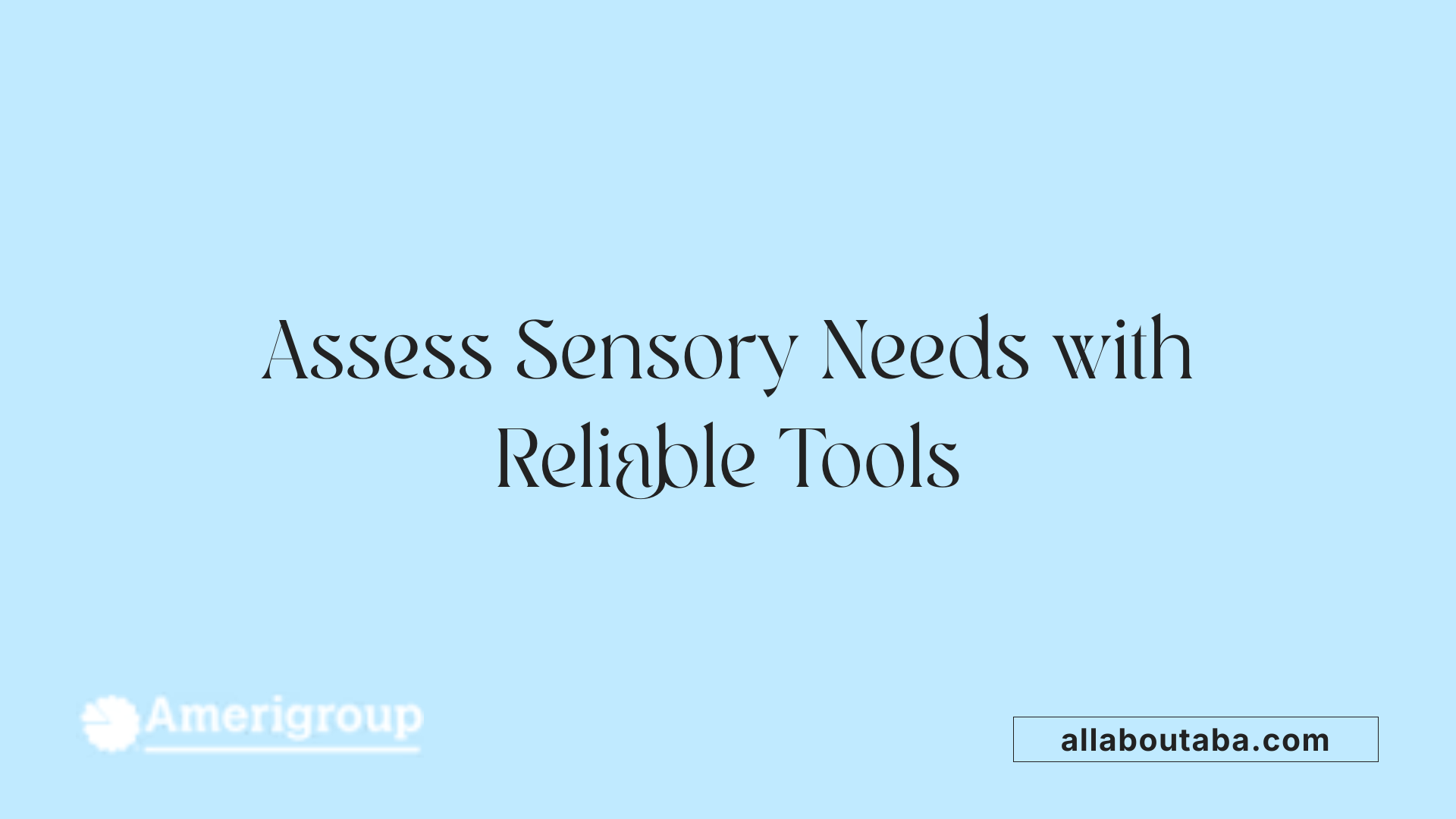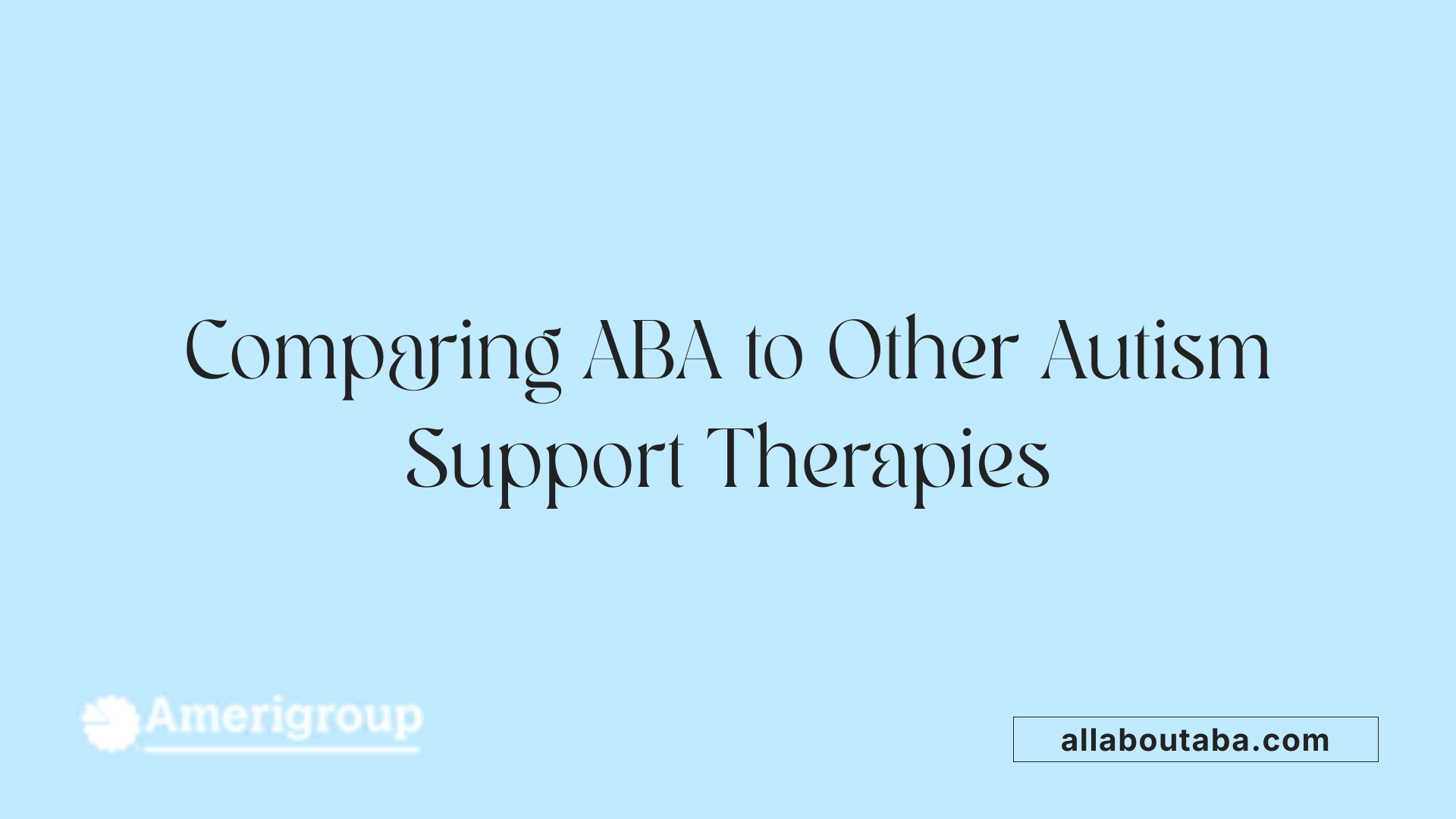Understanding Sensory Needs in Autism at School
Children with autism often experience sensory processing challenges that can impact their ability to engage fully in educational settings. Sensory integration—and the specialized supports that come with it—is essential in helping these students navigate daily school routines, build social connections, and achieve academic success. This article explores best practices for sensory regulation at school, combining evidence-based occupational therapy approaches with supportive behavioral interventions to foster inclusive and responsive learning environments.
The Role of Sensory Integration and Processing in Autism

What Are Sensory Processing Disorders in Autism?
Sensory processing disorders (SPD) are common in children with autism spectrum disorder (ASD). These disorders involve difficulties in how the brain receives and responds to sensory information such as touch, sound, sight, and movement. Children with SPD may either over-respond or under-respond to sensory stimuli, leading to challenges in everyday activities.
What Neurological Differences Underlie Sensory Challenges?
Research has revealed that children with SPD, particularly those with autism, often display differences in brain structure. Neurological studies highlight alterations in white matter microstructure, especially in the posterior cerebral tracts. These differences correlate closely with atypical sensory behaviors, indicating a neurological basis for sensory challenges in ASD.
How Do Sensory Processing Issues Affect Learning and Behavior?
Sensory challenges in autism significantly impact a child's participation in school and social activities. These difficulties can affect academic performance, socialization, emotional regulation, and participation in sports or other group activities. For example, sensory overload can disrupt focus and provoke reactive behaviors, making it harder for students to engage successfully in classroom tasks.
Maintaining a balanced sensory and emotional state helps improve attention, learning readiness, and behavior regulation. Occupational therapy that incorporates sensory integration strategies supports children in achieving this balance, thereby enhancing their educational and social outcomes.
Comprehensive Sensory Assessment Tools for School Occupational Therapy

Sensory Integration and Praxis Tests (SIPT)
The SIPT is a standardized battery of tests designed to assess sensory integration function and praxis in children. It evaluates how well a child processes and integrates sensory information through various motor and perceptual tasks. The results help therapists identify specific sensory challenges affecting the child’s performance in school activities.
Sensory Processing Measure (SPM)
The SPM is a questionnaire-based assessment completed by parents and teachers. It provides insights into a child's sensory processing in different environments such as home and school. This tool captures behaviors related to sensory modulation, social participation, and motor functions, supporting a broader understanding of sensory issues.
Sensory Profile Assessments
The Sensory Profile involves caregiver or teacher reports that measure a child's sensory processing patterns, including over- or under-responsivity and sensory seeking behaviors. It helps in building an individualized sensory profile to guide intervention planning.
Importance of Individualized Sensory Profiles
Creating an individualized sensory profile is critical because sensory processing varies widely among children, even within diagnostic groups like autism or ADHD. Tailoring assessments and interventions based on each child’s unique sensory characteristics ensures more effective target goals and functional outcomes in school settings.
These tools collectively help occupational therapists design personalized, evidence-informed strategies to support children's sensory needs, enhancing their participation and success in educational environments.
Applied Sensory Integration (ASI): Principles and School-Based Application

What is ASI as an evidence-based manualized intervention?
Applied Sensory Integration (ASI) is a structured, evidence-based therapy designed to improve how children process sensory information. It uses sensory-rich activities to promote adaptive behaviors, focusing on real-world occupational engagement rather than just sensory stimuli exposure.
What proximal outcomes does ASI target?
ASI addresses foundational sensory processing areas such as sensory perception, reactivity, and praxis (motor planning and coordination). Improvements in these areas support better functional performance and participation in school-related tasks.
How is ASI integrated within multitiered system of supports (MTSS) in schools?
ASI can be applied flexibly across MTSS tiers:
| MTSS Tier | Application of ASI | Description |
|---|---|---|
| Tier 1 | Whole classroom strategies | Sensory-rich environments benefiting all students |
| Tier 2 | Small group interventions | Targeted activities for students with identified needs |
| Tier 3 | Individualized therapy | One-on-one ASI addressing specific sensory challenges |
This tiered approach ensures ASI supports are scaled to student needs.
How do collaboration and motivation factor into ASI?
Active participation and collaboration among occupational therapists, educators, students, and families are core ASI principles. Motivation is fostered through engaging, child-centered activities that encourage self-regulation and sensory integration in meaningful contexts. This distinguishes ASI from passive sensory-based methods.
Overall, ASI offers a principled, evidence-based framework for aiding sensory processing in school settings, promoting both sensory and academic success through deliberate collaboration and structured support.
Practical Classroom Strategies to Support Sensory Regulation

Environmental Modifications for Noise and Visual Stimuli
Reducing auditory and visual overload is crucial for supporting sensory regulation in classrooms. Implementing noise control measures such as noise-canceling headphones, quiet zones, and avoiding loud noises like whistles can help children better focus and reduce agitation. Adjusting visual stimuli by minimizing clutter and using calming colors also creates a less overwhelming environment.
Flexible Seating Options
Offering diverse seating options caters to children's different sensory needs. Use of wobble cushions encourages movement for those who find it difficult to sit still, while weighted lap pads provide calming tactile input. Alternative seating like blow-up chairs can also support children who seek varied sensory experiences.
Scheduled Sensory Breaks and Movement Activities
Incorporating regular sensory breaks gives children opportunities to self-regulate throughout the school day. Activities such as stretching, deep pressure, and movement exercises help maintain optimal arousal levels, improving attention and participation.
Adjusting Lighting and Room Layout
Soft, natural lighting or adjustable artificial lighting reduces visual stress and sensory overload. Designing the classroom layout with varied noise levels and clearly organized activity areas supports predictability and sensory comfort for students.
Use of Personal Sensory Tools
Personalized sensory supports such as headphones, fidgets, lap weights, and textured items help children manage sensory input according to their unique profiles. For example, an autistic child like Jessica benefits from headphones to reduce noise and scheduled quiet breaks to prevent overload.
Together, these practical strategies foster an inclusive classroom environment that supports sensory regulation, enhances learning, and promotes emotional well-being for children with sensory processing differences.
Collaboration Between Occupational Therapists, Educators, and Families

Role of Occupational Therapists in Schools
Occupational therapists (OTs) in school settings play a vital role in supporting children with sensory processing challenges, particularly those with autism and other developmental disorders. They assess sensory integration needs, create individualized intervention plans, and implement sensory strategies to improve participation in educational activities. Their work focuses on functional outcomes like enhancing motor skills, attention, and self-regulation.
Importance of Interdisciplinary Collaboration
Effective sensory regulation requires collaboration between OTs, educators, and families. This team approach ensures consistency and supports the child throughout different environments. OTs provide specialized knowledge on sensory processing, while educators integrate sensory supports into daily classroom routines, and families reinforce strategies at home.
Training Educators in Sensory Strategies
Equipping teachers and school staff with knowledge about sensory integration and regulation enhances the implementation of sensory supports. Training can include understanding sensory processing differences, use of sensory tools (e.g., weighted lap pads, noise-canceling headphones), and classroom modifications (e.g., flexible seating, early transitions). Educator training ensures that sensory interventions are practical and embedded within the classroom context.
Developing Individualized Plans with Family Input
Creating personalized sensory intervention plans involves collaborating closely with families to understand each child’s unique sensory profile and daily routines. Family input helps tailor strategies to meet the child’s needs both at school and home, ensuring a cohesive approach. Shared goal-setting engages families and fosters consistency across environments.
Ongoing Monitoring and Goal Adjustment
Sensory strategies must be regularly reviewed and adjusted to reflect the child’s evolving needs. OTs, educators, and families should monitor progress through observations and documented goals, such as maintaining seated position using a wobble cushion or regulating alertness with scheduled breaks. This dynamic process increases the effectiveness of interventions and supports long-term sensory integration and participation.
Complementary Behavioral Approaches: Integrating Self-Regulation Curricula

What Are the Zones of Regulation and the Incredible 5-Point Scale?
The Zones of Regulation is a curriculum designed to teach children about self-regulation by categorizing their emotions and levels of alertness into four zones — Blue, Green, Yellow, and Red. This framework helps students recognize and manage their emotional states and sensory experiences effectively.
Similarly, the Incredible 5-Point Scale uses a numerical system to help children assess the intensity of their feelings or behaviors, from calm (1) to extreme (5). This scale provides a clear structure for children to communicate and control their sensory and emotional responses.
How Does Self-Regulation Support Sensory Management?
Self-regulation curricula like these bolster sensory management by enabling children to understand and control their responses to sensory input. They promote awareness of sensory triggers and teach strategies to manage discomfort or overstimulation, thereby improving participation and behavior in school settings.
By learning to identify their sensory and emotional states, children can apply coping techniques such as deep breathing, taking sensory breaks, or seeking sensory tools, leading to improved focus and reduced reactive behaviors.
Combining Behavioral and Sensory Integration Therapies
Integrating behavioral approaches like the Zones of Regulation and the Incredible 5-Point Scale with sensory integration therapies creates a complementary support system. While sensory integration therapy addresses neurological processing challenges through sensory-rich activities, self-regulation curricula provide children with tools to consciously manage their emotional and sensory reactions.
This combination supports skill generalization across environments by linking sensory experiences with practical behavioral strategies. Occupational therapists often collaborate with educators and therapists implementing behavioral plans to tailor interventions that align sensory interventions with self-regulation goals, enhancing functional outcomes.
Overall, pairing self-regulation curricula with sensory integration promotes holistic development, allowing children, especially those with autism and sensory processing differences, to engage more successfully in academic and social activities.
Behavioral Intervention Professionals: Roles and Qualifications in Autism Support

Who typically provides ABA therapy for autism, and what qualifications do they have?
ABA therapy for autism is primarily delivered by professionals with specialized training and certification. Among these, Board Certified Behavior Analysts (BCBAs) hold a leading role. BCBAs typically possess at least a bachelor's degree, with many holding master's degrees in disciplines such as psychology or education. They complete rigorous supervised clinical experiences, enabling them to design, supervise, and evaluate evidence-based treatment plans. Their role includes ensuring adherence to ethical guidelines and tailoring interventions to meet individualized client needs.
Registered Behavior Technicians (RBTs) and Assistant Behavior Analysts (BCaBAs) work under the supervision of BCBAs. RBTs directly implement therapy programs and interact closely with clients, requiring focused training and competency in applied behavior analysis techniques. BCaBAs, as mid-level practitioners, assist in treatment planning and take part in data collection and analysis, also operating under BCBA supervision.
Successful ABA therapists embody qualities such as patience, empathy, clear communication skills, and a meticulous approach to monitoring progress. These traits are vital for effectively supporting the diverse and evolving needs of individuals with autism, facilitating positive behavioral outcomes and enhanced quality of life.
Expected Behavioral Improvements from ABA Therapy in Autism Treatment

What types of behavioral improvements can families expect from ABA therapy in autism treatment?
Applied Behavior Analysis (ABA) therapy is widely recognized for producing meaningful behavioral improvements in children with autism spectrum disorder (ASD). Families can anticipate enhancements across several areas:
Communication Enhancement: ABA techniques support the development of both verbal and nonverbal communication skills. Children often learn to express needs and thoughts more effectively, facilitating better interactions at home and school.
Social Skills Development: Targeted interventions improve social engagement, including turn-taking, eye contact, and understanding social cues. These skills can help children form friendships and participate in group activities.
Emotional Regulation: ABA helps reduce episodes of emotional upset by teaching coping strategies and self-management skills that improve control over feelings such as frustration or anxiety.
Reductions in Challenging Behaviors: Unwanted behaviors like tantrums, aggression, and self-injury often decrease as ABA plans incorporate positive reinforcement of alternative, appropriate behaviors.
ABA therapy's success depends heavily on individualized goals and ongoing monitoring. Each child's treatment plan is customized to their unique profile, emphasizing specific skill deficits or problematic behaviors. Progress is systematically tracked through data collection, ensuring interventions are effective and adjusted as needed.
Research underscores that consistent, long-term ABA therapy can lead to improvements not only in cognitive and language skills but also in daily living and adaptive functions. This multifaceted growth ultimately enhances the child's independence and overall quality of life. Nevertheless, continuing studies advocate for personalized approaches and thorough evaluation of long-term outcomes, such as social integration and emotional well-being, to maximize therapeutic benefits.
Distinguishing ABA Therapy from Other Autism Interventions

How does ABA therapy differ from other therapeutic approaches for autism?
Applied Behavior Analysis (ABA) therapy is distinguished by its highly structured, data-driven approach to modifying behavior through positive reinforcement. It involves breaking down skills into small, manageable components and systematically tracking progress to tailor interventions based on measurable outcomes. This contrasts with other therapies such as speech, occupational, or play therapy, which often focus more on developing specific skills like communication or emotional expression.
ABA's primary objective is to improve communication, social behaviors, and adaptive skills across a broad range of daily contexts. Speech therapy targets language development, occupational therapy addresses sensory processing and daily living skills, and play therapy emphasizes emotional expression and social interaction. ABA integrates these focuses into a coherent behavioral framework that emphasizes consistency and measurable growth.
Early and intensive ABA intervention—typically involving 20 to 40 hours per week—has been shown to correlate with improved cognitive and social skills, particularly when started in early childhood. This intensive involvement distinguishes ABA from many other therapies that may be less frequent or more focused in scope.
While other interventions like sensory integration work to regulate sensory processing, ABA complements them by building functional skills and promoting independence through systematic reinforcement and behavior modification. Thus, ABA serves as a foundational evidence-based strategy, often integrated with other therapies within a multidisciplinary approach to autism support.
Challenges and Criticisms of ABA Therapy in Autism Support

What challenges or criticisms exist regarding the use of ABA therapy for autism?
Applied Behavior Analysis (ABA) therapy, while widely used in autism support, faces several significant criticisms. Many critics argue that ABA can be overly rigid, focusing heavily on compliance rather than the individual's emotional well-being or sense of identity. This emphasis on conforming to neurotypical behaviors may undermine the unique experiences and perspectives of autistic individuals.
Historically, early ABA methods included aversive techniques, such as the use of unpleasant stimuli to discourage unwanted behaviors. Though these practices have largely been abandoned, their legacy contributes to ongoing skepticism about ABA approaches. Moreover, repetitive and highly structured tasks used in ABA have led some to believe the therapy promotes dependence rather than fostering natural, autonomous behaviors.
Emotional well-being is another concern. Critics note that ABA may cause distress or resentment if it suppresses natural behaviors or demands conformity without respect for the person's neurodiversity. This raises issues about respecting the identity and dignity of autistic individuals while providing support.
Further criticisms point to ABA potentially being less effective for non-speaking or highly diverse individuals, as the therapy often centers on observable behaviors rather than internal experiences. Some argue ABA overlooks neurodiversity principles, focusing instead on normalization and suppression of difference rather than acceptance and accommodation.
Proponents of ABA stress that contemporary practices have evolved to prioritize skill building, independence, and active participation, with a focus on person-centered goals. Nonetheless, ongoing debates emphasize the need for respectful, individualized, and flexible approaches that honor each person's uniqueness and promote emotional as well as functional outcomes.
In summary, while ABA remains a valuable tool for many, its challenges include concerns about rigidity, historic aversive techniques, emotional impact, and alignment with neurodiversity values, highlighting the importance of ethical, person-centered care in autism support.
Implementing School-Wide Sensory Supports and Advocacy

How can multilevel sensory interventions be aligned with educational laws?
Multitiered systems of support (MTSS) enable the integration of Ayres Sensory Integration (ASI) across three tiers: Tier 1 targets whole school or classroom strategies, Tier 2 addresses small groups, and Tier 3 delivers individualized support. This framework aligns with federal laws such as the Every Student Succeeds Act (ESSA) and the Individuals with Disabilities Education Act (IDEA), which promote inclusive supports across multiple levels to foster learning and participation.
What role does staff education and training play in sensory approaches?
Educating school staff about sensory integration principles is vital for the consistent application of sensory supports. Training occupational therapists and educators in ASI strategies ensures interventions are delivered effectively and responsibly. Skilled practitioners can then collaborate closely with teachers and parents to individualize supports and embed sensory strategies into daily routines.
How can systemic changes reduce barriers to sensory integration?
Systemic adjustments involve creating policies and environments that prioritize sensory-friendly adaptations—such as designing quiet spaces, providing sensory tools, and modifying classroom layouts. Removing logistical, knowledge, and resource barriers enables broader access to sensory-based interventions and fosters an inclusive atmosphere that recognizes diverse sensory needs.
Why is advocacy important for increasing sensory integration implementation?
Advocacy efforts drive awareness among school leadership, educators, and families about the benefits of sensory integration in supporting students with sensory processing differences. Promoting ASI within educational systems encourages funding, resource allocation, and policy development to expand evidence-based sensory services and training.
How is monitoring intervention fidelity ensured?
Ongoing evaluation and fidelity checks help verify that sensory interventions adhere to evidence-based protocols. Practitioners should regularly assess outcomes and adjust strategies, ensuring that individualized goals are met while maintaining ethical standards and maximizing functional student participation. This process also supports continuous improvement and accountability within sensory programs.
Moving Forward: Inclusive Sensory Regulation Practices in Schools
Sensory regulation is crucial for enhancing the educational experiences and outcomes of students with autism. Integrating evidence-based approaches like Applied Sensory Integration alongside supportive behavioral interventions, occupational therapy strategies, and collaborative teamwork builds a foundation for success. Schools that commit to sensory-friendly environments, ongoing staff education, and individualized student supports empower children with autism to thrive academically, socially, and emotionally. As research evolves, continued advocacy and thoughtful implementation will expand access to these essential services, fostering inclusive classrooms where every learner’s sensory needs are respected and met.
References
- Best Practice in the Use of Sensory Integration in School- ...
- Supporting sensory needs at school
- Occupational Therapy Using Ayres Sensory Integration ® in ...
- Ten simple sensory strategies for autistic children
- Sensory Strategies and Supports for the Classroom
- Efficacy of Sensory Interventions on School Participation ...
- Why Occupational Therapy For Autism Works
- Supporting Sensory Diversity: Building Inclusive Classrooms
- ABA Therapy vs. Other Interventions: What's Best for Kids?







